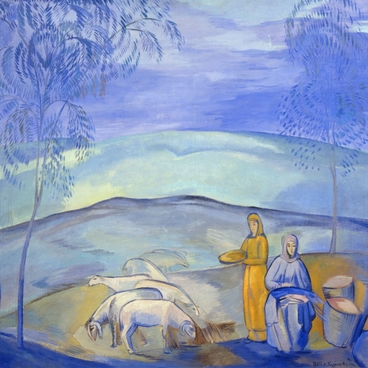Thomas Willeborts, a Flemish Baroque painter, lived and worked in Antwerp. He embarked on his path as an apprentice when he entered the studio of Gerard Seghers, whose painting Card Players is in the collection of the Radishchev Museum. From Seghers, Willeborts borrowed the masterful light and shadow combination technique.
After completing his studies, Willeborts joined the Guild of St. Luke and founded his owns studio. His paintings were very much in demand, and he collected orders from all over Europe. After completing his studies, Willeborts joined the Guild of St. Luke and founded his owns studio. His paintings were very much in demand, and he collected orders from all over Europe.



